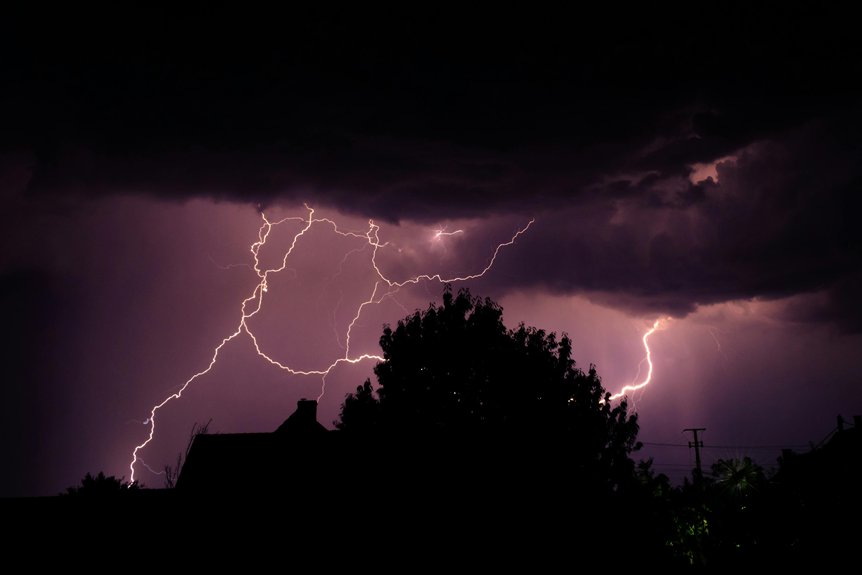When it comes to replacing your roof, paying attention to flashing can make all the difference. Properly installed flashing seals vulnerable areas and directs water away from your home’s structure. Skipping or neglecting this step can lead to leaks, mold, and costly repairs down the line. Understanding why flashing matters might just save you money and headaches in the long run—so, let’s explore what you need to know.
What Is Roof Flashing and Its Role in Protecting Your Home
Roof flashing is a thin layer of material, usually metal, installed around roof features like chimneys, vents, and valleys to direct water away from vulnerable areas. Proper roof flashing maintenance is essential to prevent leaks and water damage. Regular flashing inspection tips include checking for corrosion, loose or missing sections, and any signs of rust or damage. When inspecting, focus on areas where flashing meets other roofing materials, ensuring they’re sealed tightly. If you notice cracks or gaps, it’s time to repair or replace the flashing to maintain your roof’s integrity. Additionally, scheduling professional inspections can help identify issues before they become costly repairs, emphasizing the importance of professional roofing services.
Common Types of Roof Flashing Materials and Their Benefits
Choosing the right flashing material can make a significant difference in how well your roof protects your home. Metal sheets, such as aluminum, copper, or galvanized steel, are popular because they’re durable, corrosion-resistant, and long-lasting. These materials withstand harsh weather and provide a sturdy barrier against water intrusion.
Sealant barriers, often made from roofing cement or flexible sealants, enhance the effectiveness of flashing by sealing gaps and preventing leaks. They work well with metal sheets or other materials to create a watertight seal around vulnerable areas like chimneys, vents, and valleys.
Selecting the appropriate combination of metal and sealant barriers guarantees your roof remains protected, reduces the risk of leaks, and extends the lifespan of your roofing system.
Signs That Indicate Need for New Roof Flashing
Over time, signs of wear and damage can reveal that your flashing needs replacement before leaks develop. If you notice cracked, loose, or corroded flashing, it’s a clear indicator that it’s compromised.
Storm damage can also cause dents or displacement, making your roof vulnerable. Flashing leaks often manifest as water stains or drips inside your attic or ceilings, especially after heavy rain or storms.
Additionally, peeling paint or mold around roof edges can point to ongoing moisture issues stemming from faulty flashing. Don’t ignore these signs; delaying replacement can lead to more serious leaks, mold growth, and structural damage.
Regular inspections can help you catch these issues early, ensuring your roof remains protected and your home stays dry.
Proper Installation Techniques for Effective Flashing
To guarantee your flashing provides a reliable barrier against water intrusion, proper installation is essential. Begin by ensuring the flashing integrates seamlessly with the roofing materials, overlapping edges correctly for maximum protection.
Apply a high-quality sealant along the edges and seams to create a waterproof seal and prevent leaks. When installing, make sure the flashing is snug against the roof surface without gaps or wrinkles, which could compromise its effectiveness.
Proper flashing integration involves positioning it so water naturally flows away from vulnerable areas, like chimneys or vents.
Consistent sealant application at all joints ensures waterproof integrity. Taking these steps during installation helps your flashing perform at its best, protecting your roof from water damage and extending its lifespan.
How Overlooking Flashing Can Lead to Costly Damage
Neglecting to properly install or inspect flashing can lead to serious water damage that’s costly to repair. When flashing isn’t correctly sealed, water intrusion becomes a real risk, especially during heavy rains.
Over time, this persistent moisture seeps into your roof and attic, causing wood rot and deterioration. The trapped water creates an ideal environment for mold growth, which can spread quickly and compromise your home’s indoor air quality.
Ignoring flashing issues may seem minor at first, but the resulting damage can escalate into expensive repairs and health hazards. By ensuring your flashing is properly installed and inspected, you prevent water intrusion and protect your home from costly, long-term damage caused by mold and rot.
Conclusion
In short, never overlook roof flashing during replacement. Properly installed flashing keeps water out, protecting your home from leaks, mold, and structural damage. Investing in quality materials and correct techniques guarantees your roof stays durable and weatherproof for years to come. Don’t compromise on flashing — it’s a small detail that makes a big difference in maintaining a safe, long-lasting roof. Prioritize flashing to save yourself costly repairs down the line. For more information on how to schedule your free roof inspection, call us at (405) 543-2920 or visit us online at Top View Roofing.











